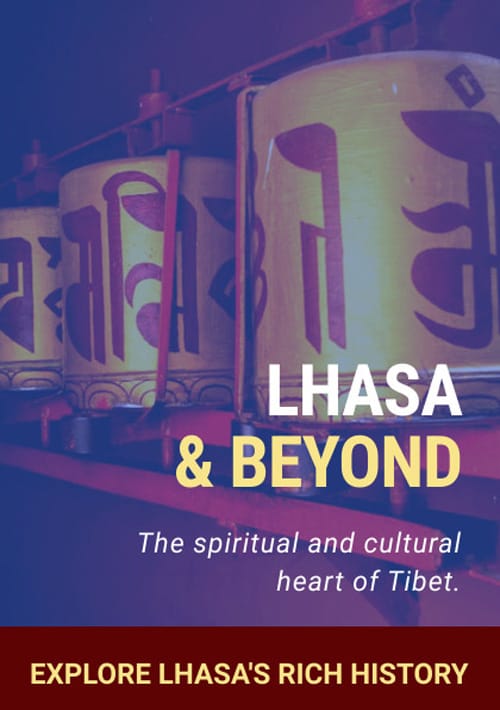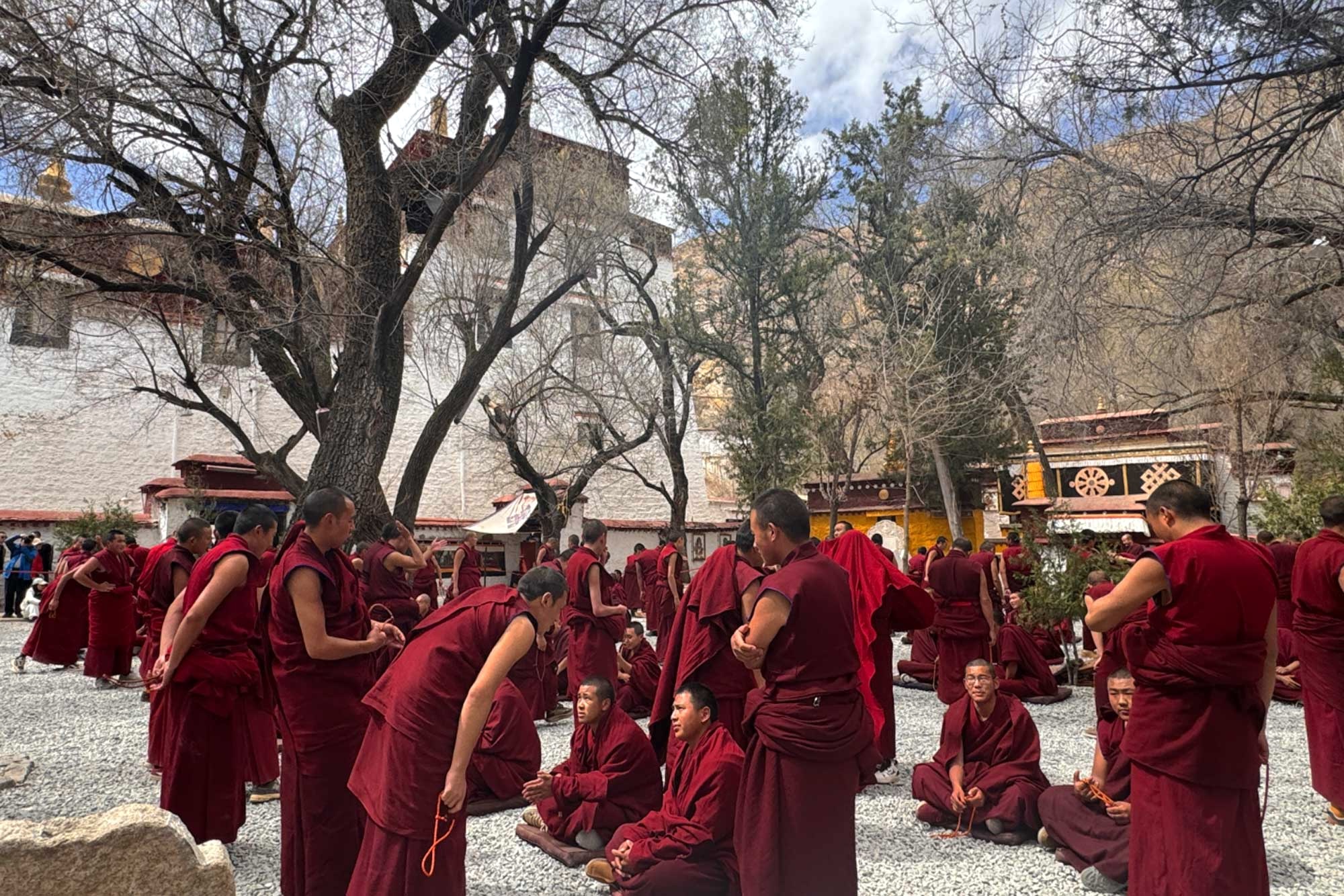
Sera Monastery, one of the “great three” Gelug university monasteries of Tibet, stands as a testament to the rich spiritual and cultural heritage of the region. Located 1.25 miles north of Lhasa and about 5 km north of the Jokhang, Sera Monastery is a captivating destination for visitors seeking a glimpse into the heart of Tibetan Buddhism.
As one of the “Great Three” Gelugpa university monasteries in Tibet—alongside Drepung and Ganden—Sera Monastery is a magnet for pilgrims, scholars, and tourists. Its unique architectural style, vibrant monastic traditions, and iconic debating sessions make it a must-visit destination for those exploring Lhasa.
Sera Monastery’s sprawling complex covers 28 acres and is divided into three main areas: the Great Assembly Hall, three colleges, and various residential quarters. These structures are masterpieces of Tibetan architecture, characterized by whitewashed walls, golden roofs, and intricate woodwork.
The Great Assembly Hall (Tsokchen) This is the largest and most significant building within the monastery, used for major religious ceremonies and gatherings. The hall features exquisite murals depicting Buddhist deities, historical events, and moral teachings. Inside, rows of prayer cushions accommodate monks during chanting sessions. Visitors can admire the large bronze statues, thangkas (Tibetan scroll paintings), and butter sculptures that adorn the interior.
The Monastic Colleges Sera houses three monastic colleges: Sera Je, Sera Me, and Ngakpa Dratsang. Each college specializes in different areas of Buddhist philosophy and esoteric practices. These institutions were historically the academic heart of the monastery, attracting students from across Tibet and neighboring regions.
Residential Quarters The living quarters for monks are simple yet harmonious, reflecting the monastic lifestyle. The quarters are interconnected by narrow alleys, creating a maze-like environment that evokes a sense of timelessness.

One of Sera Monastery’s most captivating attractions is the lively debating sessions held in its courtyard. Every afternoon, except on religious holidays, monks gather here to practice the art of debate—a central component of their education in Tibetan Buddhism.
What to Expect: The debates are both dramatic and enlightening. Monks engage in rapid-fire questions and answers on philosophical topics, punctuated by emphatic hand claps to emphasize their points. The energetic exchanges are not only intellectually stimulating but also highly entertaining to observe.
Why It Matters: The debates serve as a rigorous intellectual exercise, honing the monks’ analytical skills and deepening their understanding of Buddhist scriptures. For visitors, it provides a rare glimpse into the dynamic and interactive aspects of monastic life.
Sera Monastery is more than just an architectural marvel; it is a living embodiment of Tibetan Buddhism’s spiritual essence. Pilgrims often circumambulate the monastery, spinning prayer wheels and offering prayers. During major Tibetan festivals, such as the Butter Lamp Festival and Monlam Prayer Festival, the monastery becomes a vibrant hub of activity, with colorful rituals, chanting, and performances.
Additionally, the monastery is home to numerous sacred relics, including ancient scriptures, statues, and ritual objects. Among them, the statue of Maitreya Buddha (the future Buddha) in the Great Assembly Hall is especially revered.
Best Time to Visit: Spring and autumn are ideal, as the weather is mild and conducive for outdoor exploration. The afternoon debating sessions are a highlight, so plan your visit accordingly.
Dress Code: Modest attire is recommended, respecting the monastery’s religious significance. Avoid wearing hats or sunglasses inside the halls.
Photography: While photography is generally allowed in outdoor areas, it is prohibited inside certain halls and during debating sessions. Always ask for permission before taking pictures.
Engage with Local Guides: Hiring a knowledgeable guide can enhance your visit, providing deeper insights into the monastery’s history, art, and spiritual practices.
Getting There: Sera Monastery is located about 5 kilometers (3 miles) north of central Lhasa. Visitors can reach it via taxi or guided tours, which are commonly offered by local travel agencies.
Sera Monastery is more than just a tourist attraction; it is a gateway to understanding Tibet’s profound spiritual and cultural heritage. Whether you are drawn by its architectural beauty, intrigued by the intellectual vigor of the debating monks, or simply seeking a moment of tranquility, a visit to Sera Monastery is sure to leave a lasting impression.
For travelers to Lhasa, Sera Monastery offers an unforgettable experience—a harmonious blend of history, spirituality, and living tradition.
Conquer Everest, embrace adventure,
experience greatness!
Experience spiritual awakening and vibrant culture
on the Saga Dawa Festival!
Tibet Holiday is a premier Tibet travel agency offering personalized tours to explore the rich culture and stunning landscapes of Tibet. With nearly 20 years of experience, our dedicated team of local experts provides unique insights into Tibetan traditions and spiritual sites. Committed to sustainable travel, we collaborate with local businesses, ensuring an authentic and enriching experience. Whether seeking adventure or cultural exploration, Tibet Holiday designs custom journeys tailored to your interests, making it a trusted choice for unforgettable Tibet experiences.